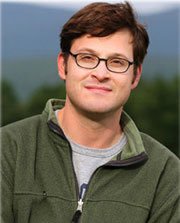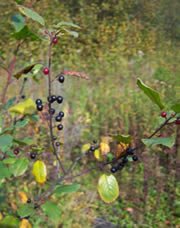Back to Darwin
Fulbright enables SU biologist to travel to New Zealand to study the evolution of invasive plants

It may be that T.S. Eliot immortalized April as “the cruelest month,” but for people living in the Northeastern United States, April ushers in a landscape dotted with bright yellow daffodils; pink and purple hyacinths; and trees awash in pink cherry blossoms, purple lilacs, and creamy-white magnolias. April also marks the seasonal start of the endless war against less welcomed invasive plants.
While invasive plants seem to be everywhere, the truth is most species that are introduced by nature or humans to new areas don’t do well. Why some plants become a nuisance and others don’t is a question that intrigues invasion biologists worldwide and is one that Syracuse University biologist Jason Fridley plans to explore in New Zealand, thanks to a Fulbright U.S. Scholar grant.
The Fulbright Program is the flagship international educational exchange program sponsored by the U.S. government to increase mutual understanding between the people of the United States and the people of other countries. Fridley will travel to New Zealand in February 2014.
“Species invasions worldwide represent an interesting biological experiment,” says Fridley, associate professor of biology in SU’s College of Arts and Sciences. “Think of all the thousands of garden plants we have introduced in Central New York over the past 150 years. In reality, maybe 20 of those plants have caused really big problems. Most of the time, introduced plants fail to establish in the wild. But the relatively rare cases in which plants spectacularly succeed represent a real mystery for invasion biologists.”
New Zealand is one of the most invaded biological places on Earth. The country’s non-native plants are among the most monitored. Fridley will be working with scientists at Lincoln University, near Christchurch, where he will have access to a massive inventory of all the non-native plants that have been brought to New Zealand since Europeans started populating the island nation.
“It’s the only inventory of its kind,” Fridley says. “The database was created by New Zealand’s Landcare Research, one of the most sophisticated state-sponsored ecology research groups in the world.”
Fridley will use the database to catalog all of the cases in which invaders have both succeeded and failed, determine the locations from which particularly successful invaders originated, and examine the evolutionary history of those places. Beyond that, Fridley hopes to establish a long-term collaboration with his New Zealand counterparts and develop experiments in New Zealand and the United States to address some of the issues surrounding invasive species.

But invasions also happen naturally, without human intervention. Fridley’s long-term goal is to develop models that could be used to predict which species are likely to become invaders. Unlike many of his contemporaries, who hold human activity largely responsible for invasions, Fridley frames his research in theories first proposed by Charles Darwin.
“Darwin was among the first to consider species invasions as a biological process that is totally consistent with natural selection,” Fridley says. “Natural selection says a species needs to be as good as or better than its neighbors. But a species can’t have adapted to be as good as or better than something with which it has never had to compete.”
Across time, species have migrated to new places by land, sea, and air. “Darwin says that most of the time these transplanted species will fail,” Fridley says. “But sometimes they will be very successful because they hit upon a neat survival trick that the native flora didn’t have to develop to be competitive. Is there something about the evolutionary history of the places in which high-performing species originate that makes the plants particularly well-suited to become invaders?"
Media Contact
Judy Holmes
